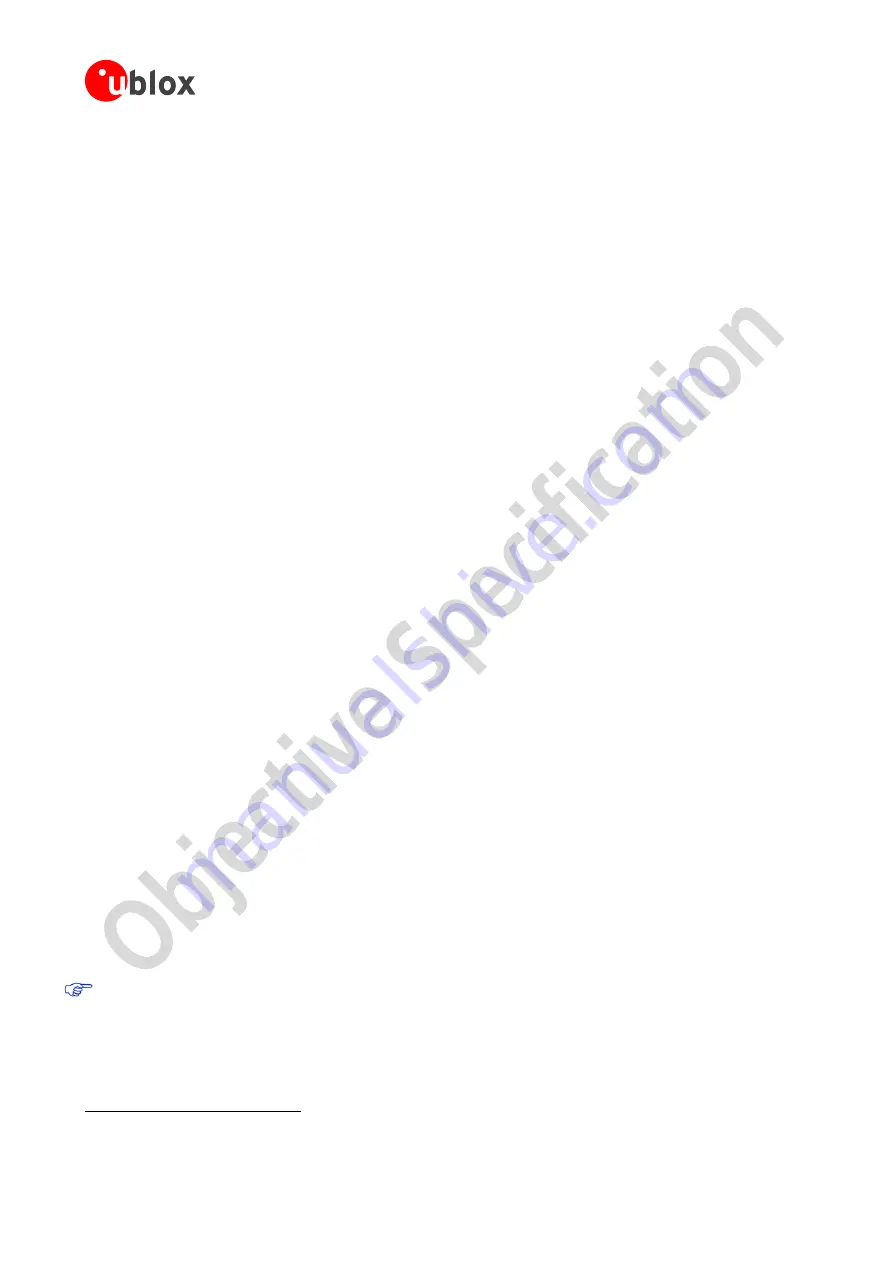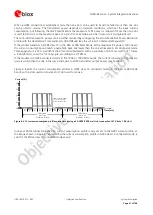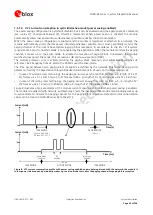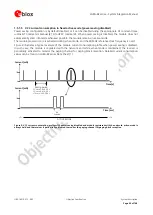
LARA-R2 series - System Integration Manual
UBX-16010573 - R02
Objective Specification
System description
Page 35 of 148
1.9
Data communication interfaces
LARA-R2 series modules provide the following serial communication interfaces:
UART interface: Universal Asynchronous Receiver/Transmitter serial interface available for the communication
with a host application processor (AT commands, data communication, FW update by means of FOAT), for
FW update by means of the u-blox EasyFlash tool and for diagnostic. (see section 1.9.1)
USB interface: Universal Serial Bus 2.0 compliant interface available for the communication with a host
application processor (AT commands, data communication, FW update by means of the FOAT feature), for
FW update by means of the u-blox EasyFlash tool and for diagnostic. (see section 1.9.2)
HSIC interface: High-Speed Inter-Chip USB compliant interface available for the communication with a host
application processor (AT commands, data communication, FW update by means of the FOAT feature), for
FW update by means of the u-blox EasyFlash tool and for diagnostic. (see section 1.9.3)
DDC interface: I
2
C bus compatible interface available for the communication with u-blox GNSS positioning
chips or modules and with external I
2
C devices as an audio codec. (see section 1.9.4)
SDIO interface: Secure Digital Input Output interface available for the communication with compatible
u-blox short range radio communication Wi-Fi modules. (see section 1.9.5)
1.9.1
UART interface
1.9.1.1
UART features
The UART interface is a 9-wire 1.8 V unbalanced asynchronous serial interface available on all the LARA-R2 series
modules, supporting:
AT command mode
5
Data mode and Online command mode
Multiplexer protocol functionality (see 1.9.1.5)
FW upgrades by means of the FOAT feature (see 1.14.13 and
Firmware update application note
FW upgrades by means of the u-blox EasyFlash tool (see the
Firmware update application note
Trace log capture (diagnostic purpose)
UART interface provides RS-232 functionality conforming to the
ITU-T V.24 Recommendation
[5], with CMOS
compatible signal levels: 0 V for low data bit or ON state, and 1.8 V for high data bit or OFF state (for detailed
electrical characteristics see
LARA-R2 series
[1]), providing:
data lines (
RXD
as output,
TXD
as input),
hardware flow control lines (
CTS
as output,
RTS
as input),
modem status and control lines (
DTR
as input,
DSR
as output,
DCD
as output,
RI
as output).
LARA-R2 series modules are designed to operate as cellular modems, i.e. as the data circuit-terminating
equipment (DCE) according to the
ITU-T V.24 Recommendation
[5]. A host application processor connected to
the module through the UART interface represents the data terminal equipment (DTE).
UART signal names of the modules conform to the
ITU-T V.24 Recommendation
[5]: e.g.
TXD
line
represents data transmitted by the DTE (host processor output) and received by the DCE (module input).
LARA-R2 series modules’ UART interface is by default configured in AT command mode: the module waits for
AT command instructions and interprets all the characters received as commands to execute.
5
See the
u-blox AT Commands Manual
[2] for the definition of the command mode, data mode, and online command mode.
















































